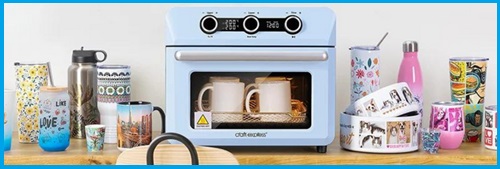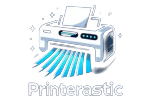|
Listen to article
Getting your Trinity Audio player ready...
|
Welcome to “Sublimation Mastery: Exploring the Boundless World of Sublimatable Materials.” Ever wondered what materials can be sublimated? Well, you’re in for a treat! In this guide, we’re diving deep into the world of sublimation printing and all the cool stuff you can print on. We’re talking about everything from the usual suspects like paper and fabric to more unusual things like metal, glass, ceramics, and who knows what else!
So whether you’re a pro at sublimation or just starting out, stick with us as we uncover the secrets of mastering sublimation on all sorts of materials and unleash your inner creative genius!
What materials can be sublimated
If your question is what materials can be sublimated? Then the answer is sublimation printing is a versatile technique that allows you to transfer high-quality, full-color designs onto a variety of materials through heat and pressure. While the most common materials for sublimation include polyester fabrics and specially coated items like mugs and phone cases, the list of sublimatable materials is actually quite extensive. Here are some materials that can be sublimated:
Polyester Fabrics:
One of the most common applications of sublimation printing is on polyester fabrics. Polyester is a synthetic material that readily accepts sublimation ink and retains vibrant colors even after washing. This makes it an ideal choice for custom apparel such as t-shirts, jerseys, leggings, and activewear. Whether you’re creating team uniforms, personalized gifts, or branded merchandise, sublimation printing on polyester fabrics ensures long-lasting, fade-resistant designs that stand out.

You can also like to read How to make sublimation coating for stainless steel? Awesome Experience
Poly-Coated Items:
In addition to textiles, sublimation can be applied to a wide range of poly-coated items, including mugs, phone cases, mousepads, keychains, and coasters. These items are specially coated to receive sublimation ink, allowing for durable and high-resolution prints that won’t fade or peel over time. Personalized mugs are particularly popular for gifts and promotional purposes, as they offer a practical yet customizable canvas for photographs, logos, and artwork.
Ceramic Items:
Sublimation printing can also be used to decorate ceramic items such as mugs, plates, tiles, and ornaments. The porous surface of ceramics readily absorbs sublimation ink, resulting in vibrant and durable prints that are dishwasher and microwave safe. Customized ceramic products are perfect for commemorating special occasions like weddings, birthdays, and holidays, or adding a personal touch to home decor and kitchenware.
Metal Surfaces:
For a sleek and modern look, sublimation printing can be applied to metal surfaces such as aluminum sheets, license plates, and photo panels. Metal prints offer exceptional image clarity and color reproduction, making them ideal for displaying photographs, artwork, and signage. Whether you’re creating personalized gifts, home decor, or promotional materials, sublimated metal prints make a lasting impression with their glossy finish and vibrant colors.
Glass Products:
Sublimation printing can also be used to decorate glass products such as coasters, ornaments, and photo frames. The smooth surface of glass allows for precise and detailed prints, resulting in stunning visuals that are perfect for displaying photographs, artwork, and designs. Customized glass products are popular for weddings, anniversaries, and other special occasions, as they offer a timeless and elegant way to commemorate cherished memories.

Wooden Surfaces:
For a rustic and natural look, sublimation printing can be applied to wooden surfaces such as plaques, frames, and coasters. The unique grain and texture of wood add warmth and character to sublimated designs, creating personalized keepsakes that are both stylish and sentimental. Whether you’re creating home decor, signage, or personalized gifts, sublimated wooden products offer a timeless and artisanal appeal.
Plastics:
Sublimation printing can also be used to decorate plastic items such as name tags, ID cards, and luggage tags. The smooth and durable surface of plastic allows for crisp and vibrant prints that are perfect for branding, identification, and promotional purposes. Customized plastic products are popular for businesses, events, and organizations, as they offer a cost-effective and versatile way to showcase logos, slogans, and contact information.
Specialized Blanks:
In addition to traditional substrates, there are also specialized blanks available that are specifically designed for sublimation printing. These blanks come in a variety of shapes and sizes and are made from materials such as ceramic, metal, glass, and plastic. From puzzles and mousepads to pet tags and jewelry, the possibilities are endless when it comes to creating unique and personalized products with sublimation printing.
These are just a few examples, but the possibilities are virtually endless when it comes to sublimation. As long as the material has a polyester coating or is made of polyester, or has been specially coated for sublimation, you can likely achieve stunning results with sublimation printing.
How does sublimation work in a nutshell?
Sublimation is like a magical transformation that turns solid ink into a gas without it ever becoming a liquid. It’s pretty fascinating how this works! Here’s a simple breakdown:

- Ink that Does Tricks: So, sublimation ink is special. It’s made with dyes that can change directly from a solid to a gas when they’re heated up. These dyes are super vibrant and they stick around for a long time without fading.
- The Heat is On: To get this ink to do its thing, we need some heat. That’s where a heat press comes in. It’s a machine that applies heat and pressure to transfer the ink onto whatever we’re printing on.
- Special Paper: We use something called transfer paper. It’s coated with a special polymer that grabs onto the sublimation ink when it’s heated up. We print our design onto this paper using a special printer that’s loaded with sublimation ink.
- Getting Ready: Before we start pressing, we need to get our printing surface ready. For fabrics, that might mean getting rid of wrinkles and moisture. For hard stuff like ceramic or metal, we might need to put a special coating on them first.
- Pressing Time: Okay, now we’re ready to go! We put our printed transfer paper on top of the material we’re printing on, and then into the heat press it goes. The press heats up the ink, turning it into a gas, and then the pressure helps it to bond with the surface of the material.
- Cooling Off: Once the pressing is done, we let things cool down. Then, we peel off the transfer paper, and voila! We’re left with our design beautifully printed onto the material, with colors that pop and details that are super crisp.
And that’s how sublimation works! It’s pretty amazing how something so simple can create such stunning results. Whether you’re making custom t-shirts, mugs, or even phone cases, sublimation lets you turn your ideas into reality with ease.
FAQs
1. Is sublimation printing permanent?
Yes, sublimation printing results in a permanent bond between the ink and the substrate. The colors are embedded into the material rather than sitting on top, providing long-lasting and fade-resistant prints.
2. Can sublimation prints be washed?
Sublimation prints on textiles and other washable items can be laundered like regular clothing or products. The prints are durable and withstand repeated washing without fading or peeling.
3. What kind of images can be sublimated?
Sublimation printing allows for high-resolution, full-color images to be transferred onto materials. This includes photographs, illustrations, logos, and intricate designs with gradients and shading.
4. Can sublimation printing be done at home?
Yes, sublimation printing can be done at home with the right equipment and supplies. This includes a sublimation printer, sublimation ink, transfer paper, and a heat press machine. However, it’s essential to follow proper safety precautions and instructions to achieve optimal results.
Conclusion
So, when it comes to sublimation printing, the options are pretty much endless! From your favorite polyester shirts to those cool mugs and phone cases, ceramics, metals, glass, wood, plastics, and even those specialized blanks meant just for sublimation – you’ve got a whole bunch of stuff you can work with.
Whether you’re whipping up custom tees, creating one-of-a-kind gifts, or making some eye-catching promotional swag, sublimation lets you put your designs on pretty much anything you can think of. So, the next time someone asks, “Hey, what materials can you sublimate?” you can confidently say, “Well, let me tell you…”


